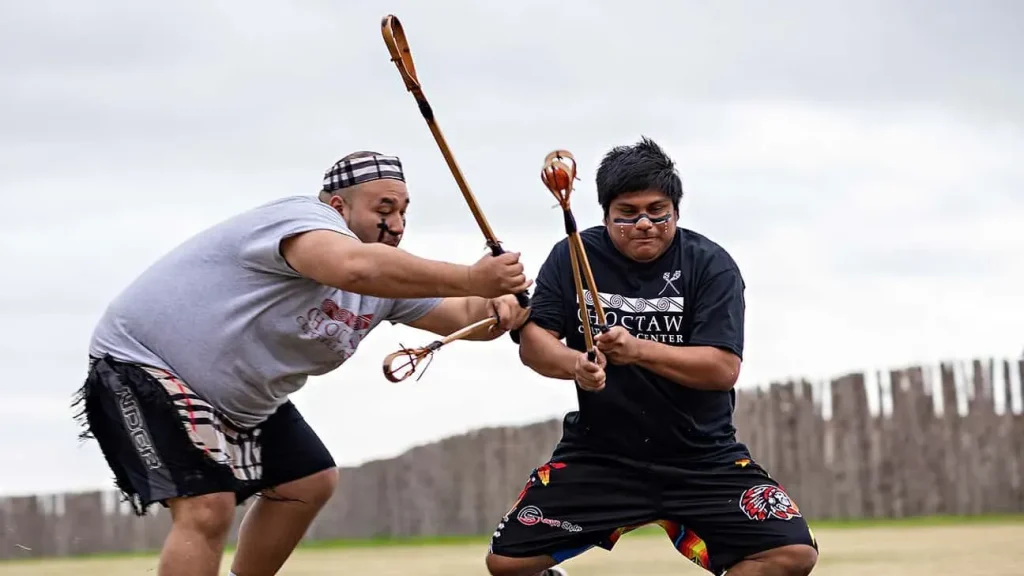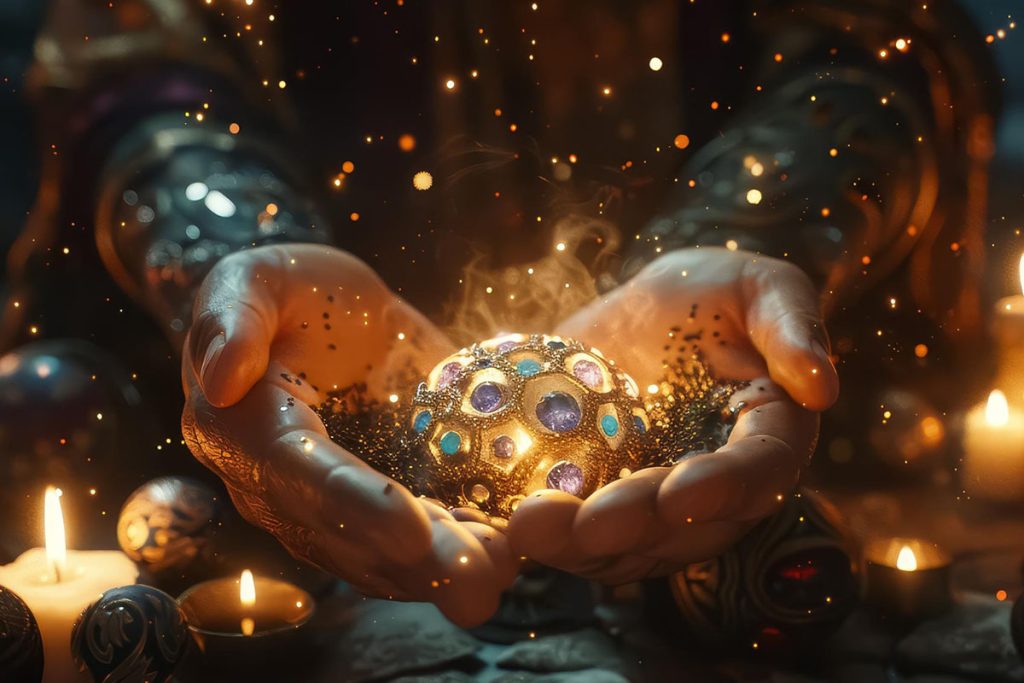Stickball, often celebrated as America’s oldest sport, holds a deep and rich history within Native American cultures, particularly among the Choctaw Nation. This exhilarating game, known for its relentless energy and physical combativeness, is much more than mere entertainment; it serves as a cultural cornerstone reflecting centuries of tradition. With roots tracing back to the early 18th century, stickball was historically employed as a diplomatic tool to settle disputes peacefully, circumventing bloodshed and conflict among tribes. Today, the sport retains its fierce spirit through vibrant tournaments showcasing skill, athleticism, and community resilience. As stickball continues to evolve, it not only preserves the legacy of Native American sports but also forges an unbreakable bond among players and their families in celebration of their heritage.
Stickball, sometimes referred to as the “Little Brother of War,” is a vibrant and engaging team sport steeped in Native American tradition. This remarkable game, which dates back centuries, is often regarded as one of the oldest competitive activities in America, tracing its origins to the cultural practices of indigenous tribes like the Choctaw. Players utilize two netted sticks to aim for a wooden post, embodying both physical prowess and communal spirit. Stickball tournaments draw together not just competitors but entire communities, fostering connections that transcend generations. Through thrilling matches and spirited competition, this sport not only entertains but also honors the rich history and traditions of Native American cultures.
The Cultural Significance of Stickball in Native American Communities
Stickball, known as ishtaboli among the Choctaw, is deeply rooted in the cultural and historical context of Native American communities. This game is not merely a sport but a reflection of the values and traditions of the tribes that have played it for generations. For many, it’s a way to connect with their ancestry and keep historical narratives alive. The game has evolved from a method of conflict resolution among tribes into a community-centric activity that fosters camaraderie, athletic spirit, and cultural pride. Each match, especially during tournaments, is a celebration of identity and history that brings families and tribes together.
The energy on the field during stickball games encapsulates a sense of belonging and identity. Coaches and players express that the sport transcends mere competition; it’s a living tradition that embodies their ancestors’ struggles and triumphs. Players, often related by blood, feel an immense responsibility to honor these traditions while also fostering the next generation of stickball athletes. This unique aspect of the game creates unbreakable bonds among players, solidifying stickball’s place as not just a game but a cultural cornerstone for many Native American communities.
Understanding the Rules and Gameplay of Stickball
Unlike many modern sports, stickball is characterized by its simplicity and raw physicality. Played with two hickory sticks and a small leather ball, it can take place on a vast field with minimal equipment, emphasizing the players’ skill and endurance. Each team fields 30 players, and the goal is to hit a tall wooden post with the ball—a challenge that requires not just physical prowess but strategic teamwork. The game resembles a blend of rugby and lacrosse, with high-energy collisions and quick tactical movements, making it both intense and exhilarating.
The absence of protective gear adds an element of toughness intrinsic to stickball. Players rely on their agility, stamina, and skill to navigate the fast-paced action. Practices are rigorous, with players learning to balance aggression with teamwork. The physical nature of the sport is reminiscent of its historical roots as a substitute for warfare, where tribal disputes were settled through competition rather than bloodshed. Today, while the spirit of competition remains fierce, the cultural exchanges and relationships built on the field are paramount, turning every game into a tribute to both athleticism and tradition.
The History of Stickball: America’s Oldest Sport
Stickball’s roots trace back to the 17th century, positioning it as America’s oldest team sport, even older than baseball. The earliest documented recording of stickball was from a Jesuit missionary’s writings in the 1720s, highlighting its long-standing significance in Native cultures. This history reflects not just the evolution of a game but also the resilience of native tribes that have preserved this aspect of their cultural identity through generations. Stickball has adapted over time, yet its foundational principles of community and competition remain unchanged.
As ‘America’s oldest sport’, stickball serves as a living historical narrative, showcasing how games can reflect cultural values. The transition from a conflict resolution tool to a community celebration illustrates the depth of its significance. Historical narratives embedded within the sport not only honor the past but also serve as an educational tool for younger generations, ensuring that traditional play continues amid modernization and changing cultural landscapes. The nostalgic recollections of elderly players, coupled with the excitement of youth, ensure that stickball will persist as a vital cultural thread.
The Competitive Spirit of Stickball Tournaments
Stickball tournaments serve as the highlight of the competitive calendar for players and fans alike. These events gather communities, drawing in spectators who cheer for their teams with enthusiasm and passion. Teams begin rigorous training months in advance, demonstrating their dedication and readiness for the challenge of competing against rival tribes. The atmosphere is electric, filled with the rhythmic beats of drums and the spirited cheers of supporters, creating an unparalleled sense of unity and excitement. Winning these tournaments embodies not just athletic achievement but also community pride and heritage.
During tournaments, the stakes are high—not just for the title but for the honor of the community. Players often speak of the importance of victory as a way to elevate their tribe’s name and preserve their legacy. Each match becomes more than just a game; it is a representation of their heritage and a testament to their commitment to maintaining their traditions. With every point scored and every tackle made, players are not only competing on the field but also upholding a cultural narrative that has been passed down for generations.
Training and Preparation: Building Skills for Stickball
Training for stickball is both physically demanding and culturally enriching. Players often engage in rigorous practice sessions that emphasize speed, agility, and coordination, closely mirroring the high-intensity nature of the game itself. Coaches, such as Jimmie Vaughn Jr., focus on drills that cultivate teamwork and sportsmanship, vital components in this community sport. The physical demands of the game are considerable, and players condition themselves year-round, ensuring they are fit and prepared to tackle the challenges of tournaments.
Moreover, the preparation extends beyond physical training; it intertwines with the players’ cultural education and responsibility to pass on traditions. Younger players learn not only the mechanics of stickball but also its history and significance within their communities. This dual focus on athleticism and cultural preservation fosters a sense of pride and purpose, ensuring that stickball not only remains a competitive sport but also a cherished heritage. The commitment to training symbolizes a dedication to the sport and to the community that celebrates it.
Players’ Perspectives: Personal Stories from the Field
The individual journeys of stickball players reveal a common thread of passion, pride, and dedication. Players like Robert Garcia Jr. recount since childhood memories intertwined with the sport, emphasizing how stickball shaped their identities and relationships. The camaraderie developed among teammates often translates into lifelong friendships, enhancing the sense of community embedded in the sport. As players share their personal stories, it becomes evident that the game is more than just competition; it is a communal act that strengthens bonds among families and friends.
Testimonies from players such as Kahlon “Jak” Logan reflect the personal growth that comes from engaging in stickball. Many players transfer skills learned on the field to their everyday lives, emphasizing the sport’s role in personal development and cultural pride. Each player carries the weight of their tribe’s legacy, using their experiences in stickball to inspire younger generations. These stories encapsulate the essence of the game—proving that each tackle, goal, and win is tied to shared history and collective identity, making stickball a vital facet of their lives.
Stickball’s Impact on Modern Native American Identity
In contemporary society, stickball plays a critical role in shaping modern Native American identity. The resurgence of interest in traditional games like stickball reflects a broader cultural renaissance among Indigenous peoples who seek to reclaim and celebrate their heritage. As players engage in competitions that celebrate their backgrounds, they contribute to a movement that underscores their resilience and cultural integrity. Stickball serves as a platform for cultural expression, allowing players to showcase their skills while reaffirming their commitment to their tribal identities.
This revival is also essential for fostering pride among younger generations. By participating in stickball, youth connect with their history, learn the importance of teamwork and discipline, and cultivate a sense of belonging. As the sport gains visibility and recognition, it also challenges stereotypes and misconceptions about Native communities, illustrating their vibrancy and complexity. Stickball, as a cultural symbol, thereby empowers Indigenous peoples to define their narratives and assert their presence in the broader societal landscape.
The Future of Stickball: Preserving a Sacred Tradition
As stickball continues to evolve, the focus remains on preserving its essence while adapting to contemporary contexts. Community leaders and players emphasize the need for ongoing education and mentorship to ensure that the game is passed down through generations. Programs targeting youth development in stickball not only promote athleticism but also foster a deeper understanding of cultural heritage, reinforcing the significance of this tradition in the modern age.
Efforts to promote stickball on a larger scale could include organized tournaments, exhibitions, and partnerships with educational institutions. Such initiatives could help attract a broader audience, enhancing appreciation for this traditional game. By evolving while rooted in history, stickball can inspire new generations to honor their heritage and champion their communities, ensuring that this remarkable sport endures as a vital part of Native American identity for years to come.
Frequently Asked Questions
What is the history of stickball among Native American sports?
Stickball, known as ishtaboli in the Choctaw language, is recognized as America’s oldest sport, with origins tracing back to tribal warfare resolutions among Native Americans. The earliest written accounts date back to the 1720s, indicating its deep historical significance within Native communities.
How has Choctaw stickball evolved over time?
Choctaw stickball has evolved from a ceremonial conflict resolution sport to a vibrant community event, preserving cultural heritage while maintaining the intense physical competitiveness akin to modern sports. Today, it involves large teams competing in tournaments that showcase traditional sticks and gameplay techniques.
What are the key rules and gameplay elements of stickball tournaments?
In stickball tournaments, two teams of 30 players each attempt to score by hitting a tall wooden post with a small leather ball, using netted hickory sticks. The game is highly physical, featuring no pads or time-outs, and emphasizes non-lethal contact, reflecting its historical role as a diplomatic sport.
Why is stickball referred to as ‘America’s oldest sport’?
Stickball is referred to as ‘America’s oldest sport’ due to its long history predating other popular American sports like baseball. Its significance is rooted in Native American traditions, making it a vital part of cultural identity and community bonding today.
What is the significance of stickball tournaments in the Choctaw community?
Stickball tournaments hold immense significance for the Choctaw community, serving as a means of cultural expression and community unity. They are events where tradition, competition, and family connections converge, reinforcing social ties and cultural pride.
How does stickball incorporate physical and cultural elements?
Stickball incorporates physical activity with its intense gameplay, requiring cardio, agility, and strategy reminiscent of football and lacrosse. Culturally, it preserves the sacred traditions of Native American heritage, linking players with their ancestors and fostering community solidarity.
What role do family and community play in Choctaw stickball?
Family and community play a central role in Choctaw stickball, as players often compete alongside relatives and lifelong friends. This familial aspect fosters a deeper emotional connection to the game, emphasizing teamwork and shared cultural pride.
How do participants in stickball view their competition and shared experience?
Participants view their competition in stickball as more than just a game; it’s a physical battle that strengthens bonds among teammates and embodies their cultural heritage. They cherish the shared experiences and collective memories that this traditional sport creates.
What makes the practice of stickball special for players?
For stickball players, practice is special as it serves as a bonding ritual with friends and family, combining physical training with the reinforcement of cultural values. The sense of unity and shared purpose during practice underscores the sport’s importance beyond the field.
In what ways does stickball reflect the values of the Choctaw people?
Stickball reflects the values of the Choctaw people by emphasizing community strength, resilience, and a commitment to cultural preservation. It encapsulates the spirit of unity and respect for traditions, enabling players to honor their ancestors while enjoying the dynamics of modern sport.
| Key Points | Description |
|---|---|
| Stickball’s Origins | Stickball is America’s oldest team sport, referred to as ishtaboli by the Choctaw. It dates back to the 1720s and was used as a diplomatic way to resolve conflicts. |
| Game Structure | Each team has 30 players, and the objective is to hit a wooden post with a leather ball. It combines elements of rugby, soccer, and football with no pads. |
| Cultural Importance | Stickball transcends a mere sport; it is a vital part of Choctaw identity and a means of preserving cultural traditions. |
| Community Bonds | The game fosters strong community ties, with many players being family members. It’s common for players to span generations. |
| Training and Preparation | Teams practice rigorously in preparation for tournaments, often for months, highlighting the competitive nature of the sport. |
| Recent Achievements | The Pearl River team won the championship in 2024 after several previous losses, marking a significant moment for their community. |
Summary
Stickball is not just a sport; it is a representation of community, heritage, and resilience for the Choctaw people. Engaging in this age-old game allows players to honor their ancestors while creating unforgettable memories with family and friends. As the Pearl River team showcases their dedication and skill, the spirit of stickball continues to thrive, strengthening bonds within the community.



